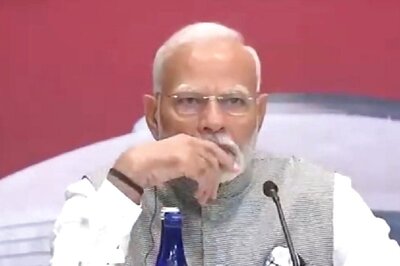
views
Gumnaami
Director: Srijit Mukherji
Cast: Prosenjit Chatterjee, Anirban Bhattacharya, Tanusree Chakraborty
Bengal has its holy cows that none can question. Having grown up in Calcutta (now renamed Kolkata in one of those meaningless exercises of trampling upon history), who would know this better than me! If the Bengali on the boulevard is fiercely possessive about football as he is about fish, he considers Ray and Rabindra Sangeet his trademark rights whose supremacy nobody can dispute. An average Bengali is as passionate about rossogulla or rajbhog as he is about Renoir, who shot his 1951 The River – a coming of age story set on the banks of the Hooghly. But if there is something which surpasses all these, it the Bengali's beloved Netaji. Subhas Chandra Bose remains till this day – decades after he disappeared in 1945 from Formosa – an enigma, a mysterious man fiercely strong about his beliefs and a diehard patriot.
My own association with Netaji is wee bit more personal. My father, who edited a newspaper in Singapore, Kuala Lumpur and Penang during World War II, had actually met him there, and had stories to tell me about Netaji who led the Indian National Army. Many, many years later, I had a chance to meet Netaji's nephew, Dr Sisir Kumar Bose, who had clandestinely helped his uncle flee British house arrest in Calcutta.
These memories came floating by when I watched Gumnaami, director Srijit Mukherji's (known for Autograph and Rajkahini, which was remade in Hindi with Vidya Balan as Begum Jaan in 2017) latest work, a thriller of sorts. Out in theatres on October 2, the film comes in the wake of a revival of interest in Netaji, and the current climate of patriotic zeal that has spawned in recent months movies like The Tashkent Files and Uri: The Surgical Strike. It will need no Sherlock Holmes to put one's finger on what these films were aiming at. They were pushing a certain stand which may be seen as trying to either publicise the achievements of the present regime or run down the former dispensation.
Mukherji's Gumnaami – mercifully – stays clear of pushing any agenda. Made in a documentary style, his movie uses black and white to narrate Netaji's story – his escape from his ancestral Elgin Road (renamed Acharya Jagdish Chandra Bose Road) house in South Kolkata. Disguised with a beard, nephew Sisir drove him to Gomoh railway station (now in Jharkhand, then Bihar) on a lonely war-besieged night in 1941. The station, now named after Netaji, was the point where he began his long and arduous journey towards Formosa, where he made plans to join the Axis Powers. He had almost forged a link with Japan, when America dropped the atom bomb, which not only crushed Tokyo's imperialistic designs but also flattened the island nation.
But nothing could stop Netaji's march towards India's freedom, which he thought could not be had through Nehruvian idealism and Gandhi's non-violent protests. There is a touching scene in Mukherji's film where he shows Netaji removing his Congress cap and badge and stepping down as the party president after he falls out with Gandhi and Nehru. An adamant Netaji tells the two leaders that Indian soldiers will not fight alongside British forces on the battlefields of World War II. But Gandhi feels that India should help the British. What did we get when we helped them in World War I, quips Netaji. “Rowlatt's Act, Jalianwalla Bagh?” But this time it will be different, Gandhi tries to assure the young man. But he remains steadfast.
Mukherji, who wrote the story and the screenplay – with Prosenjit Chatterjee (who has a striking resemblance to Subash Chandra Bose) playing Netaji and later Gumnaami Baba – switches from black and white to colour when he brings us to present times. A young journalist, Chandrachur Dhar ( Anirban Bhattacharya ), is assigned by his newspaper editor to write a story on the Mukherjee Commission set up in 1999 to probe Netaji's death in a plane crash in 1945. Justice Mukherjee concluded that Bose did not die in the crash as was commonly believed, but the Government rejected this finding.
The movie places before us three theories of what could have happened to Netaji after his escape: his death in a plane crash in Formosa, his demise in a Russian prison and his appearance at Faizabad in Uttar Pradesh where he lived the life of a sage, known as Gumnaami Baba. Many believed that Gumnaami was indeed Netaji in disguise.
Srijit Mukherji wisely does not offer an answers, and interestingly weaves into his plot the story of Dhar, whose obsession over Netaji and the quest to find the truth leads to marital rift with his young wife (Tanusree Chakraborty) and finally divorce. But there is a happy twist here, and as there could be one about the life and times of one of India's most celebrated freedom-fighters.
Gumnaami is bound to renew dormant passions or strengthen existing ones in Bengal, and with the Durga Puja festivities and holidays right here, there can be no better time for some ardent adda over Netaji.
(Gautaman Bhaskaran is author, commentator and movie critic )




















Comments
0 comment